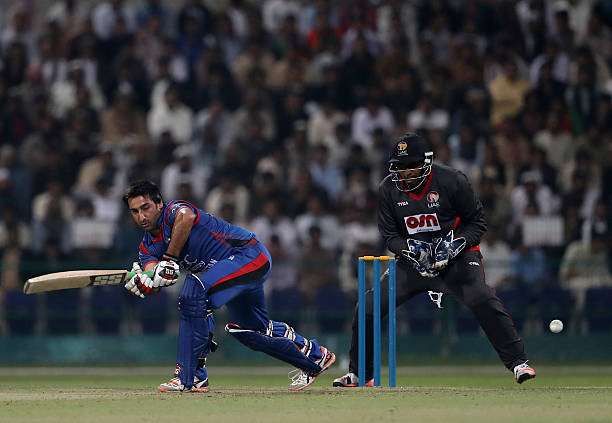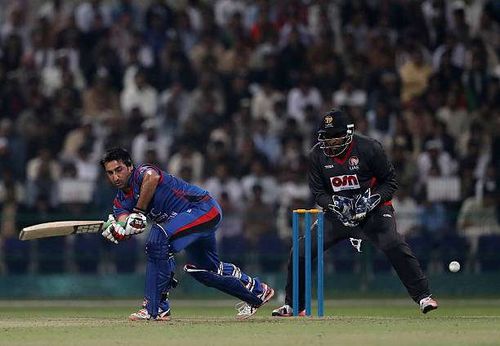
Bats, balls and bullets: The story of Afghanistan and it's storied cricket team

Amongst the rubble of fractured buildings, lies an even more fractured society. Poverty, unemployment, Islamic extremism and American airstrikes have ripped Afghanistan apart for decades. But when the dust clears, when the Taliban weakens and some semblance of peace returns to the mountainous region, albeit briefly, the Afghan people stand up, shake off the dirt, somehow, miraculously, with their national pride intact.
Afghanistan has been through hell. This is no secret. But what it means to be an Afghan has not changed. And now, while the AK47s still roam the streets, and the various armies, each truer to God than the last, rises a force keeping a seemingly tattered country intact- Cricket.
In 2003, Afghanistan did not have a functioning cricket team. In 2017, it became a full member of the ICC, one of only 12 nations to receive Test Status and cricket is now the biggest sport in the mountainous country.
These things do not just happen, they are made to happen. How it came to life, in a place known more for death than anything else and how it can be replicated in other places around the world is not just a question of expanding the game internationally, but a matter of bringing unity and peace through sport.
Also read: 5 reasons why Afghanistan deserve Test status
Let’s start at the very beginning
Cricket in Afghanistan was brought over by refugees in Pakistan. Learning to play the game using sticks for bats and bundled up plastic bags for balls, young Afghans took back a slice of the game to their home country. Cricket was more than a hobby for these young men, it was all they had in what was an unbelievably rough childhood. On returning to Afghanistan, with the help of foreign aids and personal ambition, they put together the basics of a kit, and the first trials were held for the national team in 2003.
Through that trial Afghanistan got its first team and with no jobs or school to go to, they practised all day under the guidance of their coach and captain Taj Malik, the rambunctious father of Afghanistan Cricket.
Malik had one goal: qualification to the 2011 Cricket World Cup. On the way there, Afghanistan took cricket and made it their own. Bowlers bowled as fast as they possibly could, batsmen tried to launch every ball back into Pakistan. it was the game in its rawest form as passion bellowed their progress. It was men trying to bring honour back to a land that had its pride blown away by C4s and land mines, a passion deeper than just love for the game.
They made their way to Malaysia, for the 2004 ACC Trophy, playing their first international game. Afghanistan finished sixth out of 15 nations. One month earlier they did not have birth certificates or passports, but here they were, their World Cup dream, alive.
Cricket developed rapidly after that. Competing and thriving in Asian Cricket Council tournaments, they caught media attention and were invited to play against teams in Pakistan and England, winning more games than they lost as two of their players earned a place amongst the MCC Young Cricketers.
To qualify for the 2011 World Cup, they would have to qualify through WCL 5, then WCL 4, then WCL 3 and then the World Cup Qualifiers. The top two teams in every tournament made the cut.
Armed with their dream, and now being followed by a documentary team, they won in Jersey, Argentina and Tanzania. Cricket at home blossomed with the media coverage of their team’s rise to the World Cup Qualifiers, and with the blessing of the Taliban, infrastructure grew as well.
In 2009, the country received ODI status and support at home went through the roof. Players were recognised publicly and huge public celebrations met them on their return to the country. The Taliban and Afghan army were for once on the same side, firing bullets into the night sky instead of at each other.
Also read: Mohammad Nabi hopes Afghanistan will play India in their first Test match
The next level
From a cricketing perspective, there were important changes. Taj Malik, whose efforts had single-handedly brought Afghanistan to this stage was ousted in favour of Kabir Khan, a Test player from Pakistan. His expertise and the professionality he brought allowed Afghanistan to progress to the next level.
Batsmen played with more composure, diets were monitored and with a physiotherapist, players’ health improved. Facilities in Afghanistan grew exponentially and foreign aids skyrocketed. Most importantly, however, was the popularity of cricket amongst the youth.
This is a time when young Afghans were regularly radicalised by extremists. Cricket gave them focus; it was something that kept them away from war and drugs.
Despite the fact that Afghanistan did not make the 2011 World Cup, they made it to the 2010 World T20 and the documentary that featured their rise, Out of the Ashes, was released soon after. Their journey from obscurity to a major associate reached a wide audience, including then US Secretary of State, Hillary Clinton, who commended the unity the team brought to Afghanistan.
“If we are searching for a model of how to look at tough international challenges with skill, dedication and teamwork, we only need to look at the Afghan national cricket team,” she said. Cricket had made it to the masses in Afghanistan. It was officially a big deal.
Following the T20 World Cup qualification, Afghanistan cricket became richer, the board more ambitious, and cricket grew and grew and grew, facilities boomed and professionalism improved as the national team went from success to success.
They regularly beat the likes of Zimbabwe and Ireland, winning the ICC Intercontinental Cup, the WCL Championship and they eventually qualified for the 2015 World Cup. While they crashed and burned in most games, the team absorbed the international experience like a dry sponge and a year later, they shook the world at the 2016 T20 World Cup in India.
They reduced England to 85-7, made South Africa sweat in a high scoring game in Mumbai and finally beat the tournament’s eventual champions, the West Indies.
Also read: Ireland and the fall that stopped but never stalled them
The preferred sport and a country that can now hold its head high

The World T20 success made cricket the country’s preferred sport. Cricket was integrated into the national curriculum, Afghanistan’s T20 league became hugely popular, drawing over 10,000 spectators for games, attracting international stars such as Babar Azam and Rumman Raees for the 2017 competition.
Their coaching staff also grew more reputed and experienced. Their current coach, Lalchand Rajput, is a candidate for the India coaching job. Everyone wanted a piece of Afghanistan’s success story and sponsorships hit an all-time high.
Cricketers are being produced locally, and over 80 facilities have been opened by the ACB, with hundreds of clubs all over the country, competing in leagues in all but two of the country’s 34 provinces. By beating full members away from home, like Bangladesh and the West Indies, they have shown that they are at home against the big boys.
Test status and full membership to Afghanistan means more than it does in other countries. It means jobs, it means money and most importantly, it means that a country at war with itself will finally be able to hold its head high. It means that in the streets of Kabul, young boys will be picking up bats, not guns and that stadia will be packed for cricket games and not public executions.
It may sound completely naïve and perhaps even disrespectful to even suggest that something as tragic as war, famine, drought, economic turmoil and religious extremism can be remedied by something as frivolous as cricket.
How can 22 men traipsing around a field help anyone when a country’s people don’t have food to eat and water to drink? It cannot. But cricket brings something unique to a nation that had to deal with divisions and factions. For a day or maybe five, it takes a country’s mind off their troubles, uniting a divided people.
Also read: 5 reasons why Rashid Khan could go on to become the best leg-spinner in world cricket